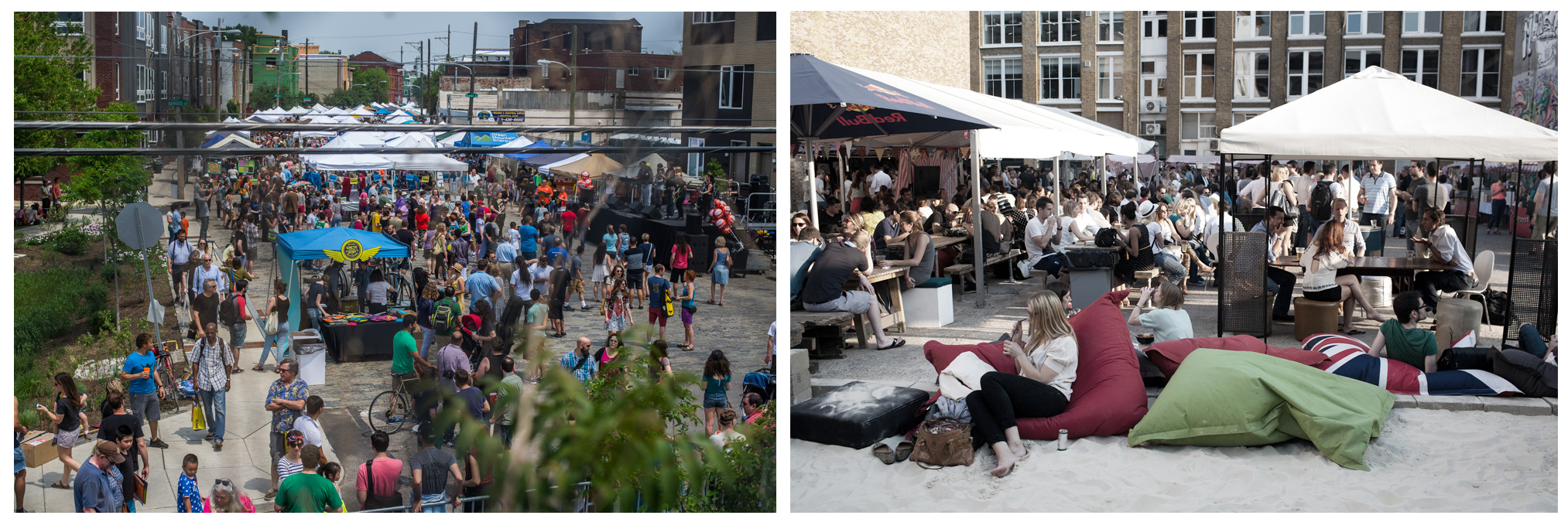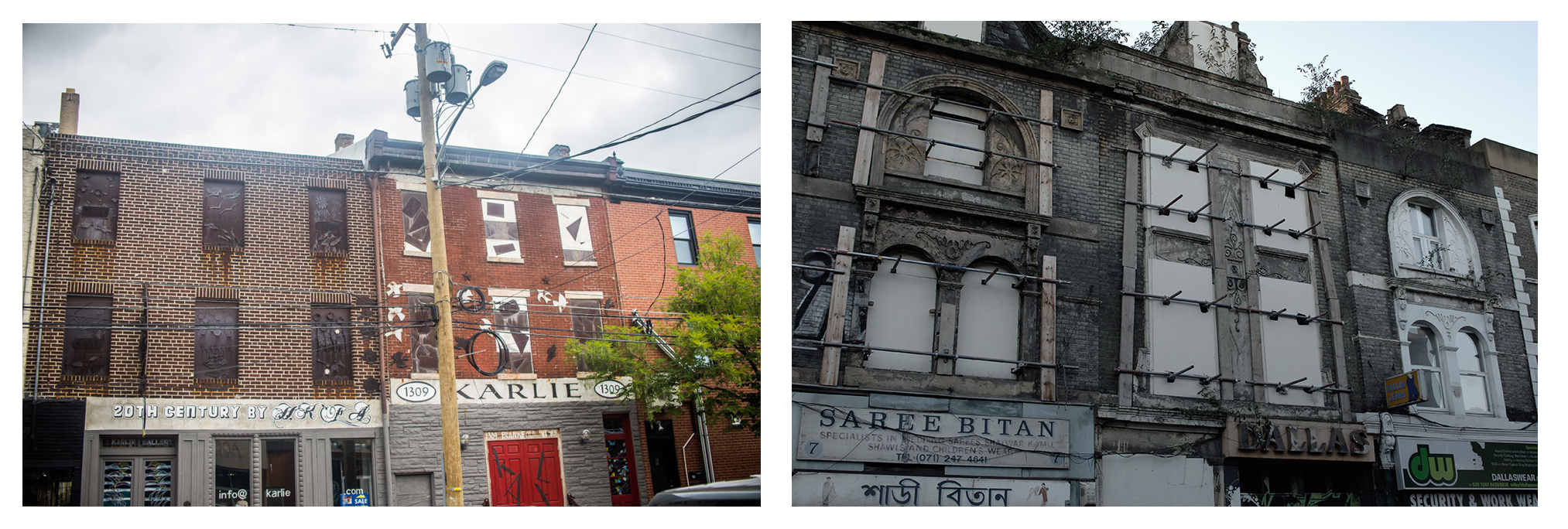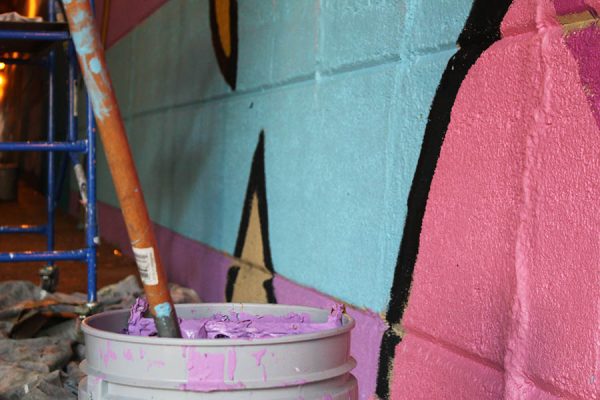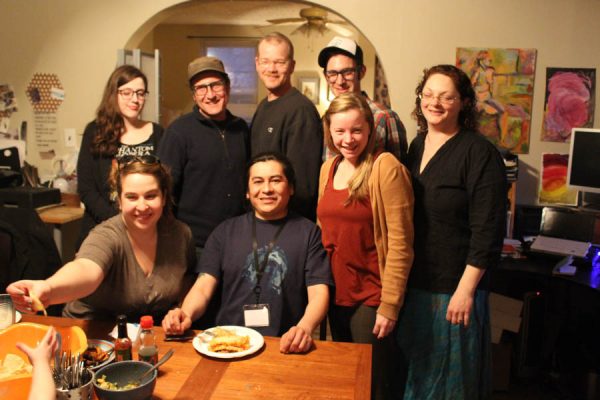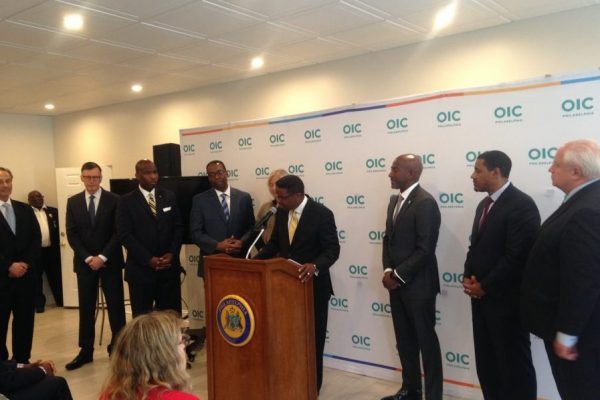A Fish Out of Water: Spirit Reporter Discovers Another Fishtown Across the Pond
Art galleries, coffee shops and street art. Community gardens, street food festivals and First Fridays. Start-up tech companies, converted warehouses and creative spaces. You may think theses elements describe the vibrant community of Fishtown, but not in this case. What I’m actually describing is a community similar to our Riverward, only this one is more than 3,000 miles and an ocean away in London, United Kingdom.
In this “A Fish Out of Water” series, we’ll take a look at this far away neighborhood called Shoreditch, see what similarities we can find between it and Fishtown and maybe even learn a thing or two from that community’s developmental process.
But why compare these two communities? Are they really that similar?
According to Fishtown resident Nadia James, they are.
“I actually just came here visiting a friend and never really considered [living in] Philadelphia at all,” James said. “But I came to Fishtown because it specifically reminded me of where I used to live in London—an area called Shoreditch.”
James had lived in London for a couple of years, but a desire to start her own business led her back home to North Jersey where she launched her content marketing consultancy firm, Griot Digital. Not long after starting up, James found a new home in Fishtown because it possessed the same creative business environment she loved back in Shoreditch. Today James serves customers like Rutgers University, SemperCon and Practice Unite from her office space located at 2424 Studios.
Shoreditch and Fishtown share commonalities throughout their respective histories. Both communities have a long, storied past of being working class neighborhoods.
Charles Booth, in his 1902 book “Life and Labour of the People in London,” described Shoreditch by saying, “The character of the whole locality is working class.” The UK blog Book Snobs say Shoreditch’s “working class roots” remain an element of the community’s vibrant nature today.
Kenneth W. Milano, a local historian who has published six books on Fishtown and other surrounding neighborhoods, characterizes the Riverwards’ roots in similar terms.
“It’s always been a working-class community,” Milano said. “You have families from the 1730s that are still living here. I think it goes to show the character of the people of Fishtown and the attachment to their community. [It is] a 275 year-old working-class neighborhood.”
Conrad Benner, an artist and street photographer, grew up in Fishtown and his family still lives in the community. Benner remembers how his father installed fire alarms for a living and his mother worked at a bank. Together his parents bought their house in the neighborhood during 1970s. According to Benner, his family will never leave Fishtown; their attachment to the community has become a large part of who they are as people.
“When I was growing up I really loved it,” Benner said. “I mean, it was definitely rough around the edges, like most American cities at that time, but for the most part [the neighborhood’s residents] were great, loving people.”
Even with these proud working-class traditions and demographics, Fishtown and Shoreditch are also linked by their well-documented past of embracing artistic culture in the community.
It’s not widely known that the first theaters of London were built in Shoreditch. The first of these playhouses was simply and aptly called “The Theatre,” built in 1576. Shoreditch is also partly responsible for breathing inspiration into the man who many would come to regard as one of the greatest playwrights the world has ever known: William Shakespeare. He came to the area as an actor during the 1590s and lived in the community. He wrote a few characters into his plays based on people he had met while living there. Some of his earliest works were even performed regularly in Shoreditch, including Romeo and Juliet.
Milano believes that Fishtown has also nurtured artists and creative people getting their start throughout the neighborhood’s history. He cites influential artists from a more recent history like Frank Bender—who is considered one of the foremost forensic sculptors in American history—as one of the many creatives who have called Fishtown home.
It’s important to note that what’s considered an artistic profession has changed over time; the folks living in Fishtown a few hundred years ago would definitely be considered artists by today’s standards.
“You always had artisans,” said Milano. “You always had craftsmen, cobblers, furniture makers and so forth. But we didn’t bill ourselves as artisans; we were working people with a job. We have always had artists in Fishtown, but it wasn’t an art community. It wasn’t artsy in a sense that it was called artsy. We didn’t have galleries, we didn’t have a scene, but people were definitely artistic.”
The two communities’ storied artistic traditions have stood the test of generations, manifesting their creativity in a number of forms through the openings of boutiques, galleries, cafes and street art.
Philadelphia-based photographer and artist Jen Cleary, recently took a trip to Shoreditch and stressed how impactful the experience was for her own creativity.
“I was told that that’s where the art is, so I just spent a whole day in Shoreditch walking around and shooting as many photos as I could. I remember being like this is a candy store…holy shit,” said Cleary.
“It reminded me of Fishtown. Just so much of it was in one compact area. Like the part next to the Old Street train station in Shoreditch [where] it’s just non-stop street art. That reminds me of underneath the El between Girard and Berks Station.”
It wasn’t until recently, over the past few decades or so, that Fishtown and Shoreditch were openly considered by the public as landmark arts communities with creativity emanating throughout the broader culture of each area. This kind of change doesn’t happen overnight. According to New Kensington Community Development Corporation (NKCDC), more than anything else, it takes years of community development articulated with a vision put in place by people who genuinely care about the community they inhabit.
Sandy Salzman, a fourth generation Fishtowner, has been Executive Director of the NKCDC since 1998. She credits her community’s progression to its residents as well as partnerships with various city agencies and organizations like The Philadelphia Horticultural Society and Mural Arts.
“When I started [at NKCDC], Frankford Avenue was a mess,” Salzman said. “We decided that we were going to make it into an arts corridor. We didn’t have one gallery; there were no artists living on Frankford Avenue. We didn’t even have a coffee shop.”
In her office Salzman keeps a picture from 1998 of a trash-strewn lot at Montgomery and Frankford Avenues. The photo paints a clear memory in Salzman’s mind and vividly symbolizes the more than 1,100 vacant lots scattered throughout Fishtown during the the 1990s. Close by is another image of that same lot, but in 2004. It shows a starkly contrasting view of an upstanding and well-tended pocket park with several trees that continue to grow there.
Shoreditch’s similar transformation was put into words by Wong Joon Ian, an East London based journalist, at the start of his article “Gentrification Without Displacement in Shoreditch,” published in the Center for Urban and Community Research’s blog.
“First came the Young British Artists, then it was Banksy and his cohorts,” Ian said. “Now, it’s the million-dollar startups of Silicon Roundabout. Shoreditch and its brick-walled Victorian warehouses have been branded a cultural quarter since the Young British Artists moved into the hollowed out, lightly industrial area on the City’s edge in the early 90s.”
Kirsty Allison was one of those Young British Artists and is now a professor, filmmaker and writer, with articles appearing in publications like The Guardian and a recent book entitled “Making Something Out of Nothing: Red Gallery Shoreditch.”
Allison believes the Young British Artists undoubtedly took ownership of the community and laid the groundwork for transforming Shoreditch into what it is today.
“[Shoreditch] used to be a lot more black and white, but now it’s very, very colorful,” Allison said. “It’s a very fluid area, which means it contextualizes to whatever is around it, and whatever is incoming into the community. It adapts naturally.”
As the neighborhood adapts, so do its businesses, with new tech startup companies like Soundcloud bringing more creative energy to an area well known for its entrepreneurial spirit.
“There are so many tech companies now, which are really part of creative industries. They are the kind of business side of creativity,” Allison said.
In 2013 the Silicon Roundabout of Shoreditch brought 15,720 new tech/creative startup companies into the community, making it the most popular and sought-after startup destination in all of the UK.
While the number of tech startups in Fishtown isn’t quite as staggering, there has been an influx of companies coming to the area, partly because the neighborhood falls under Philadelphia’s Keystone Innovation Zones—geographic zones where young tech and life science companies can apply for up to $100,000 of saleable tax credits. Tech companies in Fishtown include Boxter, Bluecadet, Pixel Parlor, and 3D Printing Dog, among other new and creative businesses popping up at places like 2424 Studios.
According to Fishtown resident Nadia James, another element that makes the local tech startup scene so incredible is the sense of camaraderie and passion she experienced first-hand during Philly Tech Week.
“I came to [Philly Tech Week] and everyone was really open and supportive when I was telling them I was starting my consultancy company, so I just knew this would be a great place to start my business,” James said.
She added:
“What I also really liked about Philly, particularly in Fishtown, is that you get a small community feel even though you are in a big city, and that’s probably the biggest thing I loved about London,” said James.
After moving back from London, James wanted to find someplace similar to the area of Shoreditch. Being a North Jersey native, New York City seemed like the obvious choice. But The Big Apple just felt like too big of a place and lacked a sense of community.
“I mean, you can live in a borough but it does not necessarily mean you get to know the people around you and feel like you know you are a part of something,” James said. “I felt like that in Shoreditch—a neighborhood where I could meet people. When I moved to Fishtown I felt the exact same way.”
This sense of community is fostered in several ways: First Fridays are staples of the monthly calendar in both Shoreditch and Fishtown, and an important component of how the arts stay in focus and at the forefront of the community. According to James, both areas’ First Fridays are nearly identical in layout, setup and overall community vibe:
“Free wine and beer, you just walk around the same little streets. It’s very close together and you talk to people.”
As James continues living in Fishtown, she wants to play a role in adding more elements to the already dynamic nature of her community, especially relating to London’s work culture. James was an account manager for Linkedin, a slightly stressful position at times, but she notes that on random sunny days (which can be rare in London) her manager would tell everyone busy at work to leave the office.
“Everything that I experienced there I want to have for the people that work for me here,” said James.
Workplace etiquette and random lunches aside, James’ attraction to living in Shoreditch came from its blending the conventional with the alternative. She sees the same synergy in Fishtown through the colorful variety of people who call the neighborhood home.
“I don’t really fit into either box personally but I enjoy different aspects of both. So I may be going to a pub that’s full of yuppies [or] I may also like to go to a dive bar that’s maybe full of hipsters. I felt like I could get all of that in Shoreditch and I feel the same way about Fishtown.”
Back in London, writer Kirsty Allison believes that this mix of culture and creativity plays a large role in what makes communities like Shoreditch and Fishtown so inviting and unique.
“It’s about maintaining a spirit of creative community and freedom within a space that should be available for everyone. It’s about cultural equality as much as anything,” said Allison. “There is an important part of cultural progression that needs freedom to articulate itself, and needs space where you can be free to express yourself beyond existing paradigms.”
Allison stresses the life-changing effect that communities like Shoreditch and Fishtown have on the folks who are a part of them. When speaking about Shoreditch directly, Allison stated: “It’s created me.”
“I would not have written my book—it’s a product of a friendship through the community. It’s also inspired my fiction work. My whole novel is set in 1990s Shoreditch,” said Allison. “I would not be who I am without having had the experience and freedom that I have had here. It’s given me my identity really.”
Conrad Benner, photographer and lifelong Fishtowner, echoes the same sentiment about his own home and how it has effected his own personal and artistic growth.
“I would definitely not be the person that I am today if it were not for growing up in Fishtown.” said Benner. “It’s not just the sense of the community and the support that community inspired, which has shown itself throughout the years. It’s also about what it taught me about the world. I saw the world first through the eyes of Fishtown.”
Want to learn more about Shoreditch and the ways it compares to our home in the Riverwards? Check out Spiritnews.org in the coming weeks for more in this “Fish Out of Water” series.
